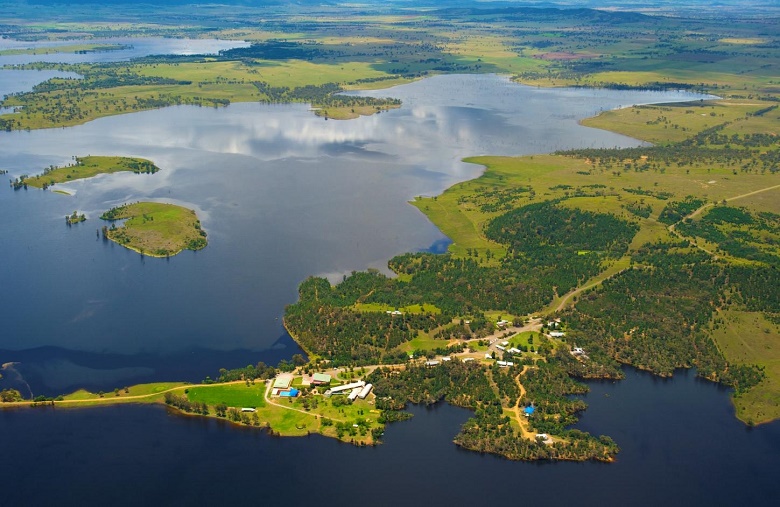
Five regional local governments have partnered on a future water security project to tackle one of the worst droughts in recent history.
As almost 80 per cent of NSW feels the crippling impacts of drought, five regional councils have launched an ambitious study looking at future water needs in a bid to boost agricultural output and future-proof the local economy.
Pressure has been mounting in north-western NSW as the local economy feels the pinch of reduced agricultural output, says Jamie Chaffey, mayor of Gunnedah Shire and chair of Namoi Unlimited, a Joint Organisation of Councils in the region.
Joint Organisations of Councils are an initiative of the NSW Government which bring councils together to identify and act on regional priorities.

With a heavily agriculture-reliant economy, the drought is pressuring the Namoi region, particularly in areas like Gunnedah which just 10 to 15 years ago was dealing with a critical population shortage, says Cr Chaffey.
“There are a lot of people I respect in the community who have been here for generations saying that this is the worst drought in memory in this region,” Cr Chaffey told Government News.
Now it’s hoped a new study that will look at water supplies in the region will help inform a future water strategy and provide new solutions.
“We need to make sure we have a strong environment for growth, and without really understanding the impact of water we can’t understand how it interacts with future growth plans,” Cr Chaffey said.
The Joint Organisation, formed between Gunnedah, Gwydir, Liverpool Plains, Tamworth and Walcha councils, hopes to help local government share the benefits of initiatives and tackle common challenges head on, he says.
“We have been looking at regional strategies in key areas and working on collaboration between councils to make sure that scale and capacity gives us strength as a region,” he says.
The Water for the Future Project will include an evaluation of existing infrastructure to inform a strategy around the infrastructure needed to safeguard the region into the future.
A region-wide audit will include consultation with producers, water users, business, processors, climate and industry groups, as well as a mapping of areas with a water shortage.
The research, which is being undertaken by consultants Rhelm, will assess current water utilities, including regional access, security, quality and usage.
Cr Chaffey says a collaborative approach helps councils to solve bigger problems with more resources and smarter solutions.
“We understand for someone to be successful in one council area there is the potential for greater outcomes for shire councils that make up the region,” he said.
A final report from the project is due mid this year.
Comment below to have your say on this story.
If you have a news story or tip-off, get in touch at editorial@governmentnews.com.au.
Sign up to the Government News newsletter.
There’s a lesson in this above story!
The Murray Darling Basin’s Lower Lakes are constantly on the brink with its River Murray water supplies. This cannot be sustained! Four towns are located around the lakes edges! It was a close call during the Millennium Drought for the Lower lakes and the Murray River, just below Mannum when sulfidic soils dried to a point where Sulphuric acid mobilised in may areas within this 840sq plus Km region. In one river area, river water in an anabranch actually turned acidic red. All was saved by rainfall in late 2010. Had it not rained and flowed into the lakes, the four surrounding towns would have faced a terrible situation with acid breakouts and fine sedimentary, acid bearing dust had already caused medical suffering and building damage. No longer should be satisfied to continue to take freshwater for the lakes when rainfall precipitation is reducing. Yes, Climate change is already reducing water in the mountain catchments. All the time, councils in these areas is content to use (and waste) fresh river water while our irrigators/food growers upstream are suffering from no water ( for 3 years in some cases) or reduced water to grow our food. Price increases for basin grown food supplies are rising! This is serious and unforgivable! We are now certain that the Lower Lakes were estuarine before the barrages were built in the1940’s. No, we should not remove the barrages and disrupt Adelaides water supplies. We should retain these structures and build another lock, LOck Zero above Wellington, update the barrages, remove Bird Island from the entrance of the Mundoo Channel and return the lakes to their former estuarine state. This will provide the commercial fishers with a return to one of South Australia’s most productive fishing operations for various species including Mulloway and Murray Cod to name two of many!
Lock zero will hold back the Murray River and 40 % (1800GL) of freshwater/yr to be drip-fed into the estuarine lakes. It will mean that upstream growers will have at least 2700GL of extra freshwater. It will also mean the lakes can be cleaned regularly by releasing 20cm to realise approx. 150GL in each outgoing tide to clear and keep clear the Murray Mouth.